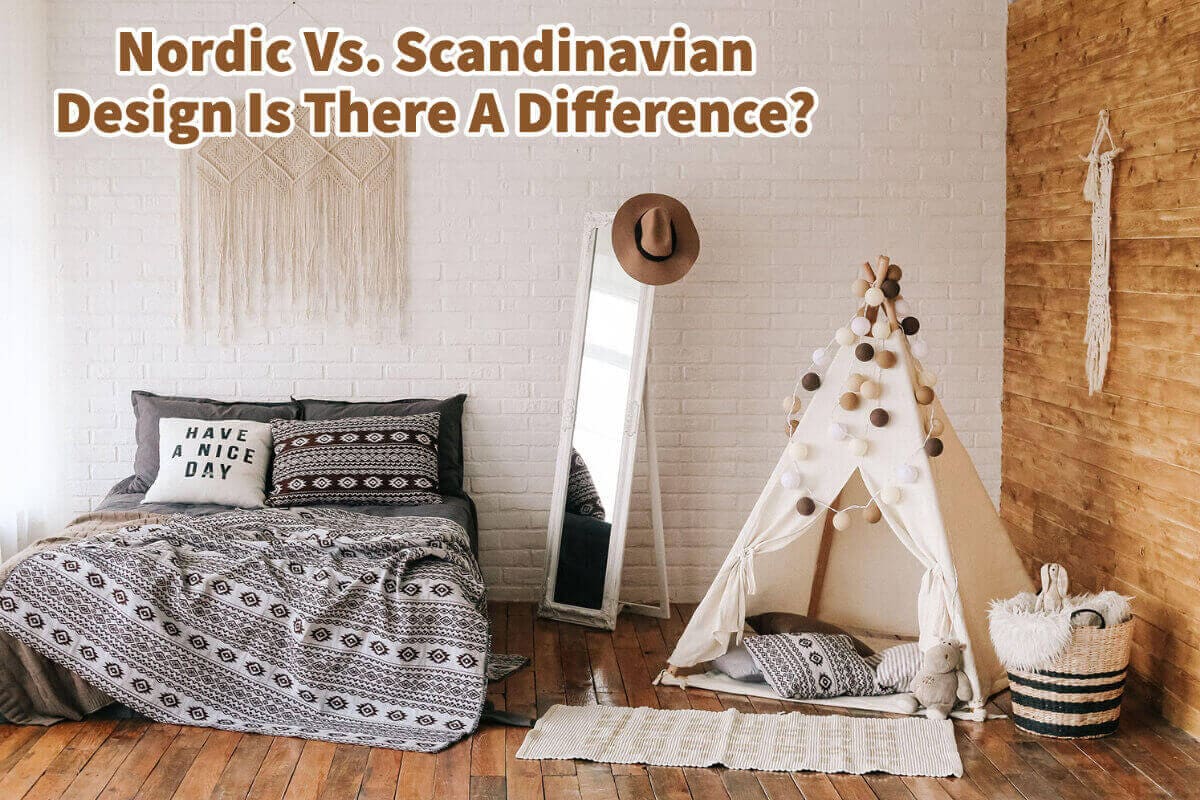In interior design, “Nordic” and “Scandinavian” are often used interchangeably. These design styles have gained immense popularity recently for their clean lines, functional approach, and timeless aesthetics.
While many people perceive Nordic and Scandinavian design as the same, subtle differences set them apart. We will delve into Nordic and Scandinavian design, exploring their distinctions and similarities and unraveling the ongoing debate surrounding their definitions.
Table of Contents
- Defining Nordic And Scandinavian Design:
- Scandinavian Designs: Danish, Norwegian, Swedish, And Finnish:
- Debates And Perceptions Between Nordic And Scandinavian Design
- Frequently Asked Questions
- Related Content
Defining Nordic And Scandinavian Design:
To understand the differences, it’s crucial first to define what Nordic and Scandinavian design encompass. Nordic and Scandinavian design refers to the design principles and aesthetics found in the Nordic countries of Denmark, Norway, Sweden, and Finland.
Even though these designs are philosophies, some differences exist between Scandinavian and Nordic designs.
Minimalism And Functionality: The Core Of Scandinavian Design
Scandinavian design is renowned for its minimalistic approach, where less is more. It emphasizes simplicity, clean lines, and functionality, emphasizing practicality and usability.
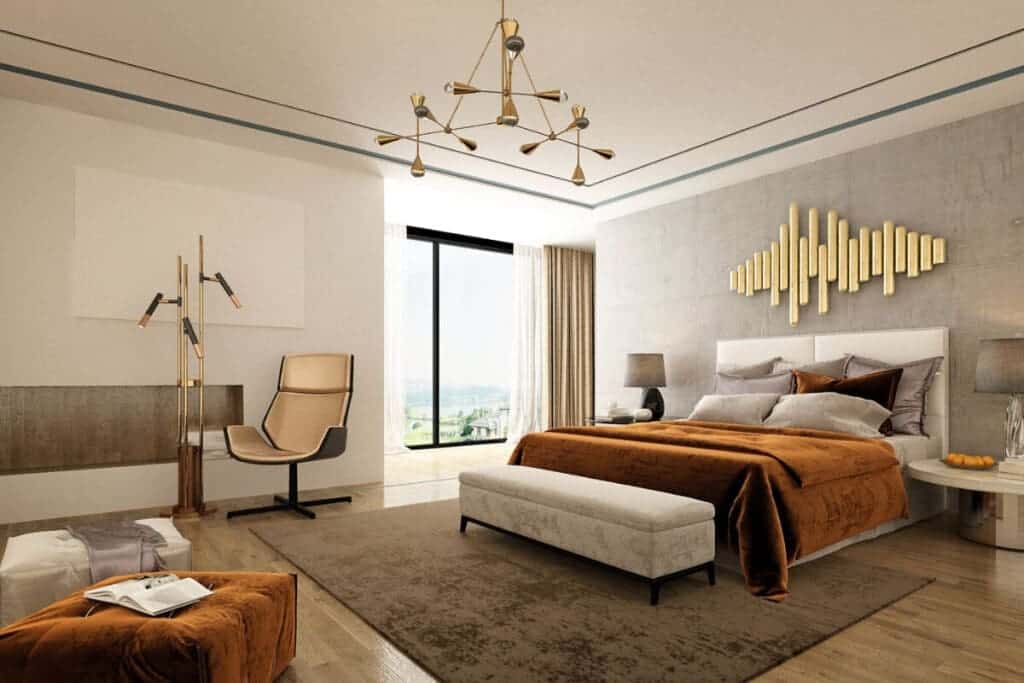
This design philosophy emerged in the early 20th century and gained international recognition during the mid-century modern movement. The iconic Scandinavian furniture designs of this era, characterized by their sleek forms and natural materials, exemplify the essence of Scandinavian design.
The Influence Of Traditional Workmanship: Nordic Design
On the other hand, Nordic design is often considered a broader term encompassing the Nordic countries’ design principles.
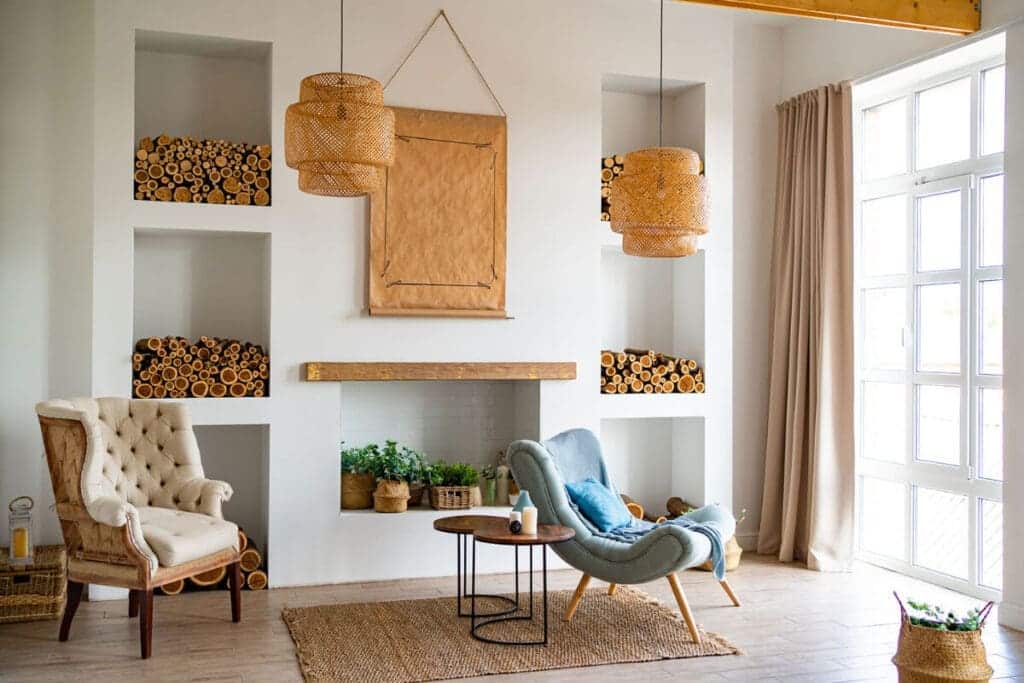
The Nordic design strongly emphasizes traditional workmanship, craftsmanship, and materials. The Nordic design draws inspiration from the region’s rich cultural heritage, incorporating traditional elements.
Nordic aesthetics include warm textiles, natural materials, and organic forms. It aims to create a sense of comfort, coziness, and homeliness in the living space.
Both of these designs include Scandinavian Design which includes designs from different countries.
Scandinavian Designs: Danish, Norwegian, Swedish, And Finnish:
Within the Scandinavian design, distinctive design styles have emerged from each country. All of these countries can encompass Scandinavian design.
Here are some of the different designs for each country and how they differ.
Danish Design – A Core Scandinavian Design
Danish design has significantly impacted the design world, and its roots can be traced back to Denmark’s history as a maritime nation. As a country with a strong maritime tradition, Denmark had a long history of trading and cultural exchange with other parts of the world. This exposure to different influences played a crucial role in shaping Danish design.
Woodworking and ceramics are two areas that Denmark looked to for inspiration in design. The tradition of woodworking in Denmark dates back to the time of the Vikings when their mastery of shipbuilding showcased their craftsmanship and understanding of working with wood.
This tradition continued to evolve through the centuries, with the development of intricate cabinetry in the 19th century.
In the 20th century, Danish design experienced an explosion of creativity, particularly in furniture design. Influential designers such as Kaare Klint and Hans Wegner gained international acclaim for their clean-lined wooden chairs. These designers embraced the natural beauty of wood and focused on creating functional yet visually appealing pieces that captured the essence of Danish design.
Denmark’s embrace of new materials and technologies also played a significant role in the evolution of Danish design. With the availability of plastics, designers such as Verner Panton and Arne Jacobsen pushed the boundaries even further, exploring innovative forms and experimenting with new materials. Their designs exhibited a forward-thinking and progressive approach that captivated international audiences.
The importance of Danish design, particularly furniture, is exemplified by the dedicated hall to chairs at Copenhagen’s Design Museum in Denmark. This recognition of the significance of chairs highlights their role in promoting Danish design and showcases the country’s rich heritage in furniture craftsmanship.

Danish design’s emphasis on clean lines, functionalism, and using natural materials has become synonymous with the Scandinavian design aesthetic. It is characterized by simplicity, elegance, and a timeless quality that inspires designers and enthusiasts worldwide.
Denmark’s history as a maritime nation and its exposure to diverse influences have powerfully shaped Danish design. Woodworking and ceramics have been significant focus areas, with a strong tradition of woodworking spanning centuries.
Danish designers have excelled in creating furniture that combines functionality, craftsmanship, and a keen eye for aesthetic appeal.
Danish design continues to be celebrated for its clean lines, use of natural materials, and timeless elegance, making it a cornerstone of Scandinavian design.
Norwegian Design – Emphasizes Use Of Natural Materials
Norwegian design emphasizes natural materials, such as wood and stone, and often incorporates traditional Norwegian patterns and motifs. It leans towards a more rustic and cozy aesthetic while maintaining a sense of elegance.
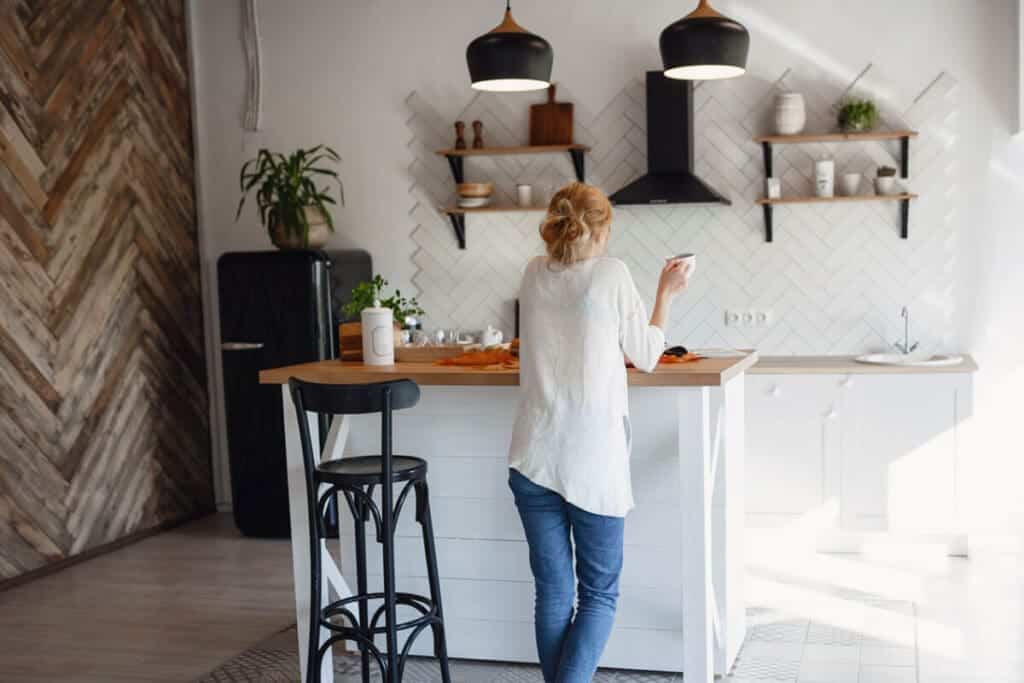
Norwegian design has a unique and fascinating history that reflects the country’s journey through different periods of rule and its deep-rooted connection to its rural communities. Norway’s history of being ruled by Denmark for 434 years, followed by Swedish rule for 91 years until its independence in 1905, played a significant role in shaping Norwegian design and preserving its distinct identity.
Norwegian design originates in the country’s rural communities, where a strong sense of Norwegian identity persists despite external influences. This eccentric and playful style draws inspiration from folk art traditions and the vibrant colors and organic shapes found in the natural world of Norway.
Following Norway’s independence, Norwegian designers embraced the Art Nouveau movement, also known as Jugendstil, which emerged in the late 19th century. In complete contrast to the spare minimalism of their former colonists,
Norwegian Art Nouveau design was characterized by curved lines, intricate ornamentation, and a celebration of nature.
Designers like Gerhard Munthe and Lars Kinsarvik produced highly decorative and ornate pieces that showcased their mastery of craftsmanship and attention to detail.
One area where Norwegian design excelled was in goldsmithing. Renowned goldsmiths such as Torolf Pritz and David Andersen gained international acclaim for their exquisite detailing and enameling techniques.
Their jewelry and metalwork showcased the fusion of traditional Norwegian motifs with the ornate aesthetics of Art Nouveau, resulting in visually stunning pieces that captured the essence of Norwegian design.
Textile artists also played a vital role in shaping Norwegian design. Frida Hansen, a prominent textile artist, combined the influences of Art Nouveau with traditional folk weaving techniques. She created unique fabrics that featured intricate patterns and rich colors, blending the old and the new to produce artistic and functional textiles.
Norwegian design’s emphasis on the fusion of folk art, natural inspiration, and the ornate aesthetics of Art Nouveau created a distinctive style that captured the essence of the country’s cultural heritage. It celebrated the beauty of nature, embraced traditional craftsmanship, and showcased a sense of playfulness and whimsy.
Norwegian design continues to evolve, blending traditional elements with contemporary influences. Norwegian designers are known for their commitment to sustainable practices, innovative use of materials, and a deep appreciation for nature’s beauty.
The legacy of Norwegian design, with its strong connection to folk traditions and the natural world, remains an integral part of the country’s design identity.
Norwegian design is deeply rooted in the country’s history, rural communities, and its journey to independence. It draws inspiration from folk art traditions, the colors and shapes of the natural world, and the ornate aesthetics of Art Nouveau.
The fusion of these influences creates a unique and playful style that celebrates Norwegian identity and craftsmanship. From goldsmithing to textiles, Norwegian designers have left a lasting impact on the design world, showcasing their mastery of detailing, enameling, and weaving techniques.
Norwegian design continues to evolve, embracing sustainability and innovative approaches while staying true to its rich cultural heritage.
Swedish Design – Simplicity And Minimalism
Swedish design is recognized for simplicity, practicality, and light color palettes. It often showcases minimalist forms, light woods, and a harmonious blend of functionality and aesthetics.
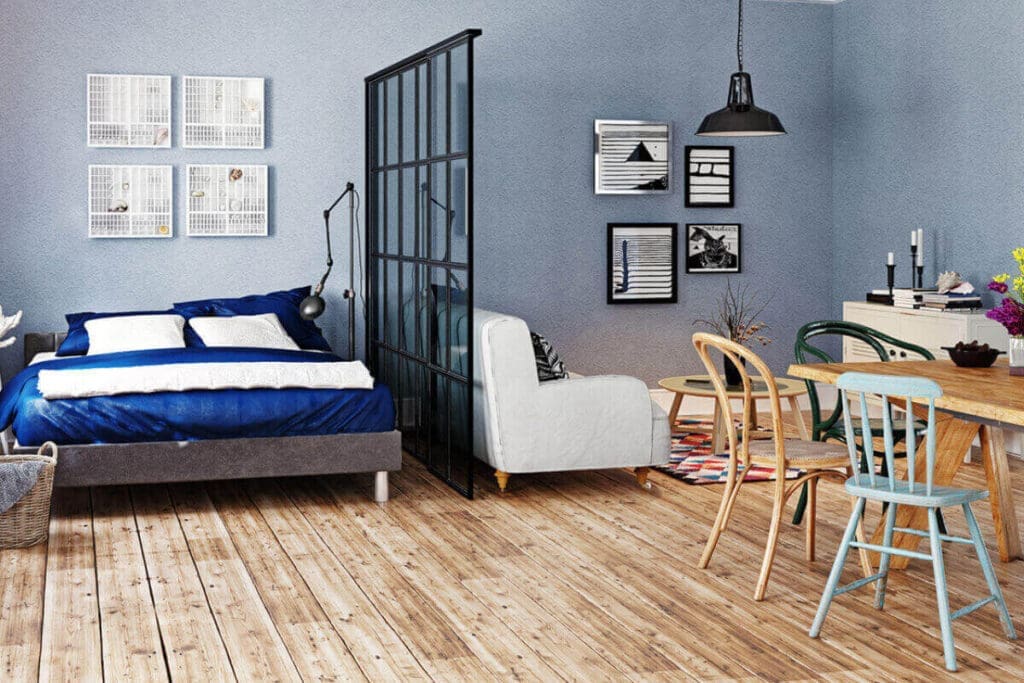
Swedish design is characterized by its ethical and inclusive approach, reflecting Sweden’s peaceful nature, collective social responsibility, and advanced welfare system. It offers solutions to individual and social problems, aiming to make design accessible to all rather than exclusive to a few.
One of Sweden’s most outstanding contributions to the design world is IKEA, which revolutionized interiors by providing clean, elegant designs at affordable prices.
The influence of Sweden’s dominant religion, Lutheranism, also plays a role in shaping Swedish design. Lutheranism emphasizes simplicity and the belief that salvation is attained through faith alone, without relying on human effort or elaborate rituals.
This simplicity finds visual expression in Swedish design, known for its practicality and functionalism, making it the simplest and most practical among Scandinavian design styles.
Modern Swedish design can be traced back to the late 18th century when King Gustav III popularized a pastel-toned version of European Neoclassicism. This style featured pine furniture and bare wood floors, reflecting a desire for simplicity and natural elements. In the 1830s,
Swedish design further developed under the German Biedermeier style, characterized by spare, blond-wood furniture. However, Swedish design emerged at the 1930 Stockholmsutställningen (Stockholm Exhibition), considered a pivotal moment in design history.
The Stockholmsutställningen showcased functional, machine-produced furniture and light-filled interiors, epitomizing the essence of Swedish design as we know it today. This exhibition shifted towards a more modern and streamlined aesthetic, aligning with the principles of practicality and functionality that define Swedish design.
Not only has Swedish design impacted the world of furniture and interiors, but it has also made its mark in art and glassware.
Sweden has two essential and iconic glassware companies of, Orrefors and Kosta. Both of these companies show the excellent Swedish design of minimalism.
The iconic artwork of Swedish artist Carl Larsson further popularized Swedish design. His vibrant and idyllic portrayals of Swedish homes, often featuring traditional folk elements and light-filled interiors, captured the public’s imagination.
Larsson’s artwork showcased the beauty and simplicity of Swedish design, inspiring generations and helping to establish a distinctive visual representation of Swedish aesthetics.
Swedish design continues to evolve, blending its rich heritage with contemporary influences. It embraces sustainability, social responsibility, and inclusivity, reflecting Sweden’s commitment to environmental and social issues. Swedish designers today strive to create functional, innovative, and visually appealing solutions that cater to the needs of individuals and society.
Finnish Design Is Folksy And Colorful
The Finnish landscape’s great lakes, deep snows, and pine-clad hills influence flowing, folksy, and colorful Finnish design. The most northerly of the Scandinavian nations, Finland’s climate makes life challenging for its people—efficient design is essential to the Finns’ survival. That said, all Finnish-designed objects—even the humblest pair of Fiskars scissors—have an element of purely aesthetic whimsy.
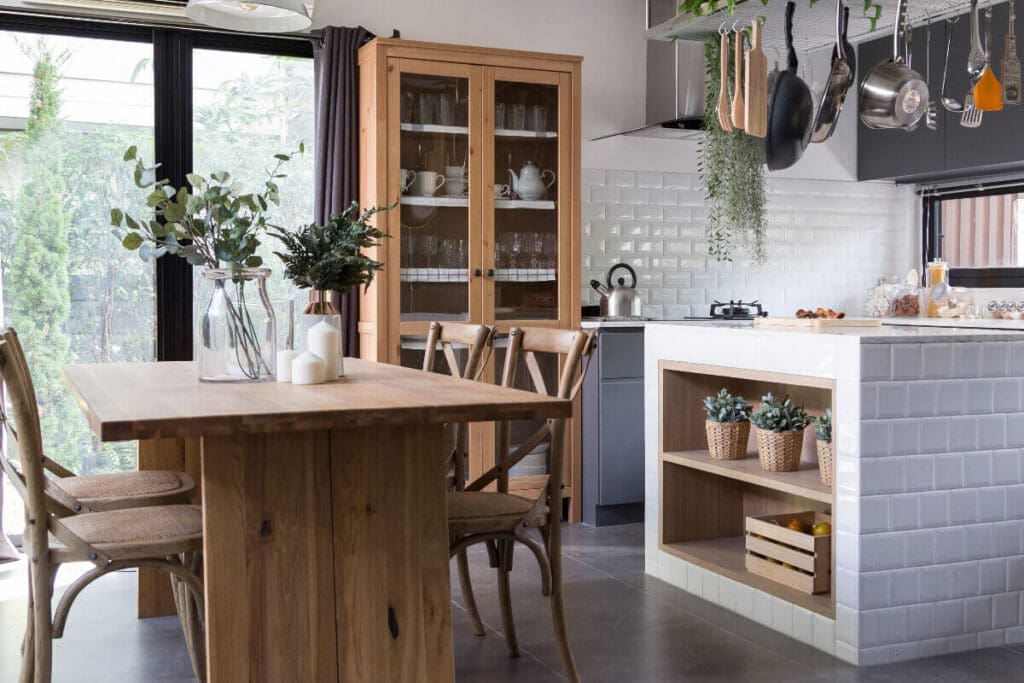
1835 Finnish poet Elias Lönnrot published the Kalevala (Land of Heroes), an epic compilation of old Finnish myths and legends. The Kalevala caused a surge of national pride and significantly influenced many Finnish designers, such as the architect Eliel Saarinen (father of Eero Saarinen). Saarinen pioneered a romantic, nature-influenced style—similar to Art Nouveau, yet distinctly Finnish.
In the 1930s, designers such as Alvar Aalto broke these organic shapes down into their purest forms, rejecting hard-edged designs in favor of the curved lines of the natural world, as seen on his lake-inspired Savoy vase. This Finnish brand of “abstracted nature” persists today in Marimekko’s splotchy flower textiles and the dewdrop-spattered Iittala glassware.
Debates And Perceptions Between Nordic And Scandinavian Design
The differences between Nordic and Scandinavian design can be a subject of ongoing debate. Some argue that Nordic design is a subset of Scandinavian design, representing the specific design principles found within the Nordic countries.
Others view Nordic design as a distinct style with unique characteristics, influenced by traditional craftsmanship and a focus on creating a sense of comfort and homeliness.
It’s important to note that design style terminology can be subjective and vary depending on individual perspectives. What is clear, however, is that both Nordic and Scandinavian design shares common elements, such as simplicity, functionality, and an appreciation for natural materials.
While Nordic and Scandinavian designs are often used interchangeably, discernible differences set them apart. Scandinavian design is renowned for its minimalist approach and emphasis on functionality.
Find out more about how Mondoro can help you create, develop, and manufacture excellent home decor and furniture products – don’t hesitate to contact me, Anita. Check out my email by clicking here or become a part of our community and join our newsletter by clicking here.
Mondoro gives out a FREE Lookbook to anyone interested. You can receive a copy of our latest Lookbook by clicking here.
Listen to our Podcast called Global Trade Gal. You can find it on all major podcast platforms. Try out listening to one of our podcasts by clicking here.
Subscribe to our Mondoro Company Limited YouTube Channel with great videos and information by clicking here.
Frequently Asked Questions
What is Scandinavian Design?
Scandinavian design originated from the Scandinavian countries of Norway, Denmark, and Sweden. This style prioritizes functionality, simplicity, and minimalism. It emerged in the 1950s as part of a design movement that sought to make design accessible to everyone.
What is Nordic Design?
Nordic design refers to the design movement originating from all five Nordic countries: Norway, Sweden, Finland, Denmark, and Iceland. While it shares many of the core principles of Scandinavian design, it often has a broader scope, sometimes incorporating elements like sustainability and inclusivity more explicitly.
Are the Countries of Origin the Same?
No. Scandinavian design specifically originates from Norway, Denmark, and Sweden, while Nordic design includes Finland and Iceland as well.
Is There a Difference in Aesthetics?
Both styles focus on clean lines, minimalism, and functionality. However, Nordic design may incorporate more natural elements, like organic shapes and textures. Scandinavian design is often stricter in its minimalism.
How Do They Approach Functionality?
Both styles prioritize functionality but may express it differently. Nordic design often goes a step further to include features like sustainability and social responsibility as part of its functionality.
What Colors Are Predominant?
In both styles, you’ll find a neutral color palette featuring whites, blacks, grays, and browns. However, Scandinavian design occasionally adds pops of color for contrast, while Nordic design leans more towards muted, earthy tones.
Are Materials Different?
Both styles focus on using natural materials like wood, but Nordic design is more open to experimenting with other materials such as glass or metals to achieve its sustainability goals.
What Role Does Craftsmanship Play?
Craftsmanship is important in both styles, but it is often more explicitly celebrated in Nordic design, which may include hand-crafted details as part of its focus on quality and sustainability.
Do Both Styles Incorporate Nature?
Yes, both styles take inspiration from nature but in slightly different ways. Scandinavian design often features nature in a more abstract sense, through natural light and materials, while Nordic design may more directly incorporate nature through organic shapes and even sustainable materials.
How Are These Styles Evolving?
Scandinavian design has been relatively consistent in its principles since its inception. Nordic design, however, is more fluid and tends to evolve with societal values, including a growing emphasis on sustainable living and social responsibility.
Related Content
What Is Stronger Rattan Or Bamboo?
Bamboo is more robust than rattan. Some bamboo is known even to have a higher tensile strength than steel; this is why bamboo is used as scaffolding in construction in many parts of Asia. Rattan is a vine that grows in the jungles; when rattan is manufactured into furniture, it can be solid.
You can learn more by reading our blog, What Is Stronger Rattan Or Bamboo? by clicking here.
How Do You Make A Bamboo Lamp Shade? All About Bamboo Lampshades
To manufacture or make bamboo lampshades, you need to 1) properly prepare the bamboo materials, 2) build a metal frame, 3) wrap the metal frame, 4) secure the bamboo onto the metal frame, 5) spray color on top of the bamboo shade if you desire the lampshade to be a color other than natural and 6) spray a top coat on the entire shade to protect the bamboo shade’s finish.
You can read our blog about How Do You Make A Bamboo Lamp Shade? All About Bamboo Lampshades by clicking here.
Rattan Vs. Bamboo – The Differences Between The Materials Explained
Rattan and bamboo are not the same material, as they have different characteristics and uses. For example, bamboo is hollow and grows straight as a tree would. Rattan is a solid material easily bent and grows in rainforests as a vine.
You can learn more by reading our blog, Rattan Vs. Bamboo – The Differences Between the Materials Explained, by clicking here.

